In the spring, Longwood Gardens comes alive with more than 250,000 tulips and daffodils.
Before the holidays, the conservatory was filled with thousands of red and white poinsettias, amaryllis and orchids.
Right now, the focus is on the winter landscape: at rest, but not asleep. Longwood Gardens is encouraging guests to take time and take a new look outdoors as they head to the tropical plant-filled conservatory. Maybe even take some time for a walk to inspire and see things in a new light.
“It doesn’t have to be a barren wasteland in the winter,” says Roger Davis, landscape manager of Longwood’s East section.
How appropriate when we’re spending more time than ever outdoors to slow the spread of COVID-19. Winter Wonder, Longwood’s theme this season, asks you to notice details big and small outdoors. In contrast, the conservatory is filled with colorful tropical plants, including more than 50 giant hanging baskets. Spread indoors and outdoors is a new exhibit, “Voices in the Landscape: Deeply Rooted with Charlotte Blake Alston,” with audio stories of the African-American experience through the lens of horticulture.
The new programs mark a shift away from orchids, which Longwood has made a winter highlight for more than a decade.

The conservatory is filled with tropical plants.
Changing to Winter Wonder allows staff to include more types of intriguing plants for indoor display, says Erin Feeney, director of landscape architecture and programs. There still are plenty of orchids inside the warm conservatory. The new display also allows the chance to show off the outdoors winter landscape, which is often overlooked.
“People don’t always see the beauty in the details and some of the finer points of gardening and beautiful structures and silhouettes during the winter,” Davis says.

A lone cardinal rests on a branch at Longwood Gardens.
Designing an outdoor display across 1,100 acres with winter interest actually started more than a century ago when Pierre du Pont started creating gardens like the Flower Garden Walk.
The largest silhouettes can be found in trees, stripped of their leaves. Trees such as river birch, stewartia and crepe myrtle have exfoliating bark worth seeking out, Davis says. Beech trees have smooth silky bark. Oaks and maples often develop fissures in their trunks. The cracks still have a textural beauty, Davis says.
Some trees like oak and hornbeam hold onto their withered leaves through winter, crinkling in the wind.
The topiary garden’s yews manicured into cones, spirals and other shapes take on new forms when topped with snow.

Berries are even more noticeable in the winter on American holly trees. See if you can spot red, yellow and winterberry holly throughout the gardens.
At this time of year, the meadow garden has a lot of natural grasses and wildflowers still holding onto their seed heads.
While Davis hopes people pay attention to these landscapes at Longwood, after leaving, perhaps they can use the same eye to notice a field out a car window or a snow-covered landscape in a new light.

In other areas, containers add winter plants. In the center of the rose arbor, for example, is a mix of shape, color and texture.
A Harry Lauder’s Walking Stick has curved branches and dangling yellow catkins. A lindera/spicebush holds on to its shiny brown leaves through winter. A winterberry holly already has been stripped of its berries by birds. A viburnum pragense made the cut thanks to its leathery leaves.
When temperatures warm, the same containers can be swapped with warm-weather plants.
While Davis says there’s much more to gardens than flowers, some plants have already started blooming. Witch hazel trees bloom in yellow and red.

Witch hazel is in bloom.
Soon, tiny winter aconite and snowdrops will open. Many lawns throughout the site are planted with hundreds of thousands of crocus and spring ephemeral bulbs. Edgeworthia will reveal its scented yellow flowers, usually starting in March.
These flowers don’t always last, but that’s a good gardening lesson, Davis says. Gardens evolve.
“Gardens don’t stay the same forever,” he says. “The flowers will come and go. That’s what always keeps us interested, to see what’s coming next.”

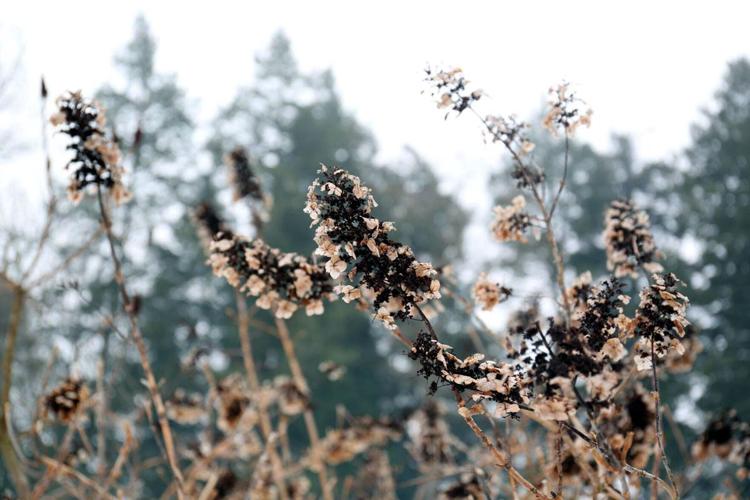


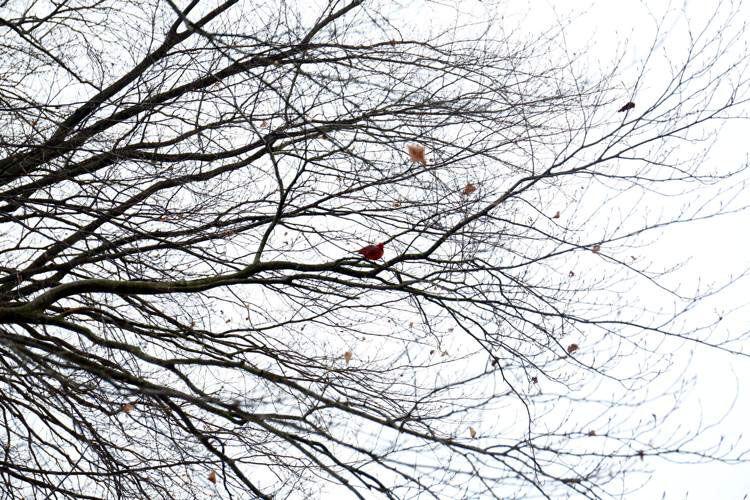
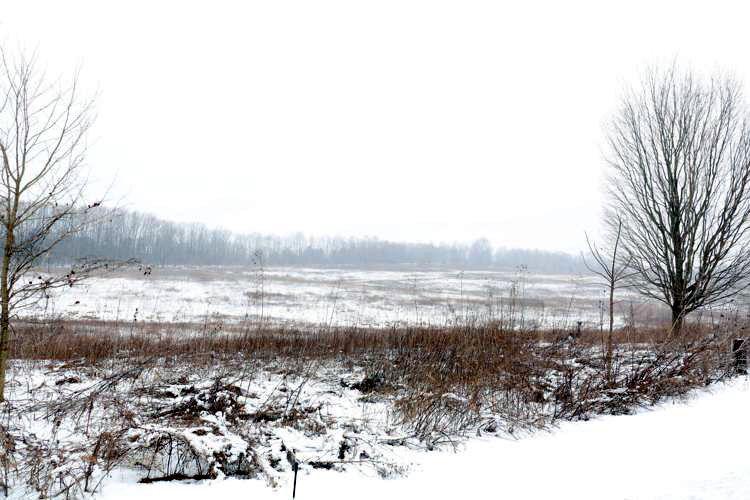
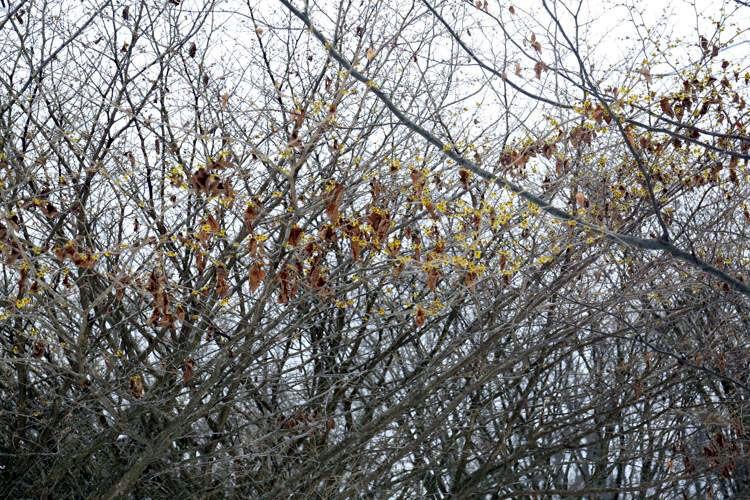
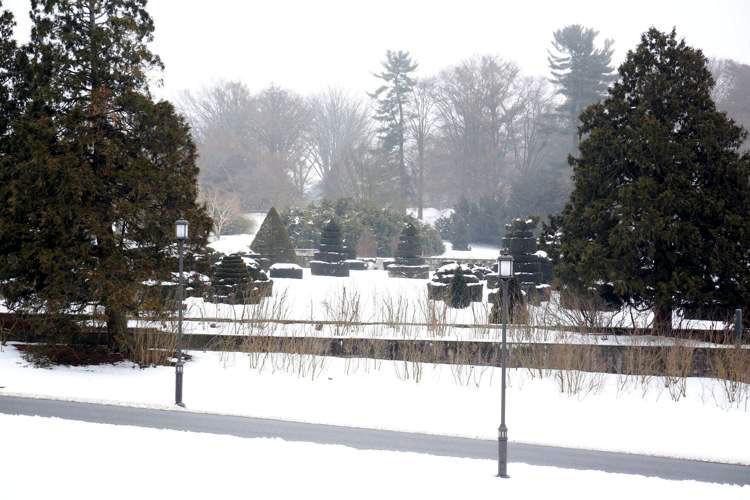
 ERIN NEGLEY | Staff Writer
ERIN NEGLEY | Staff Writer

